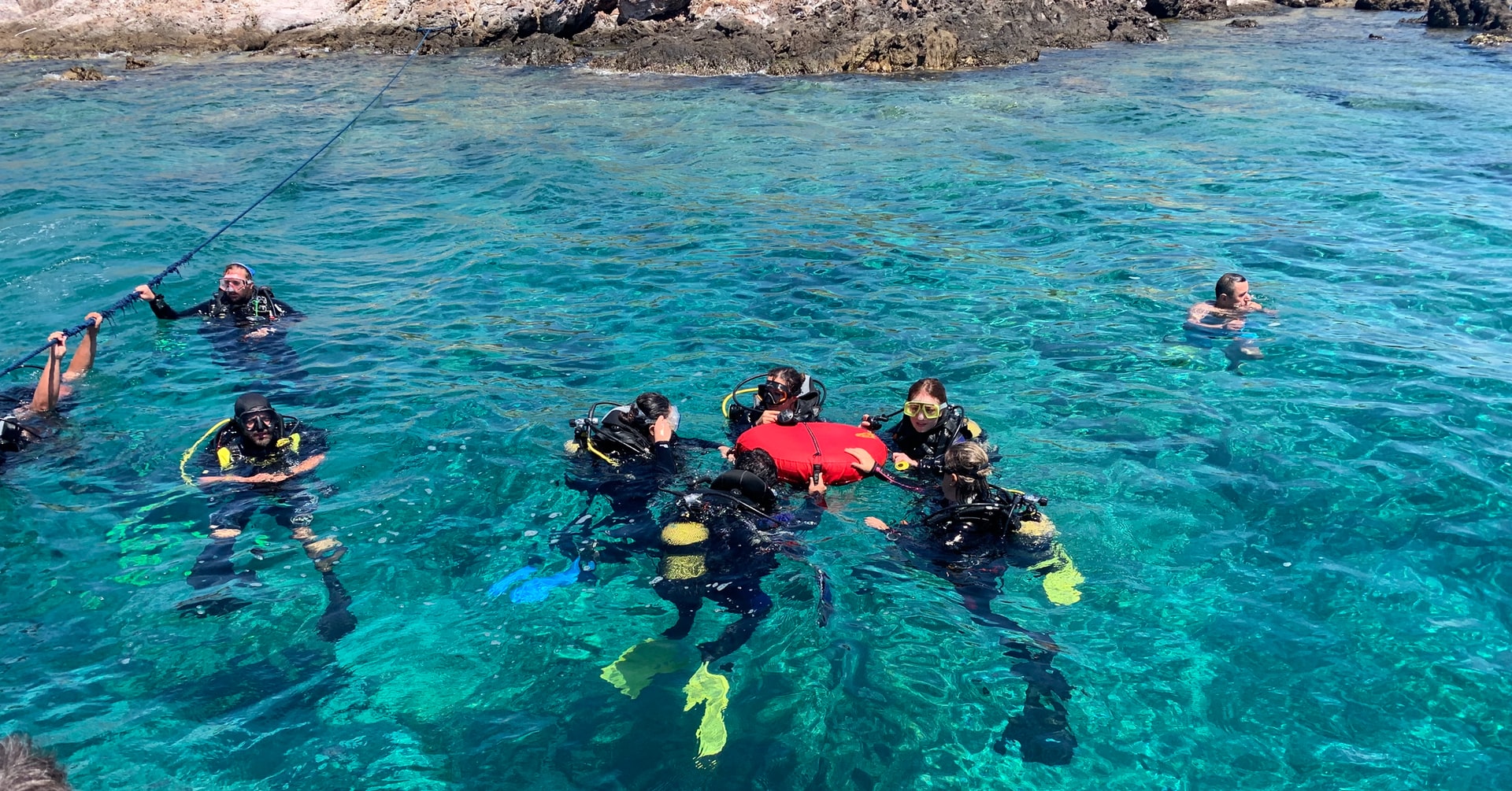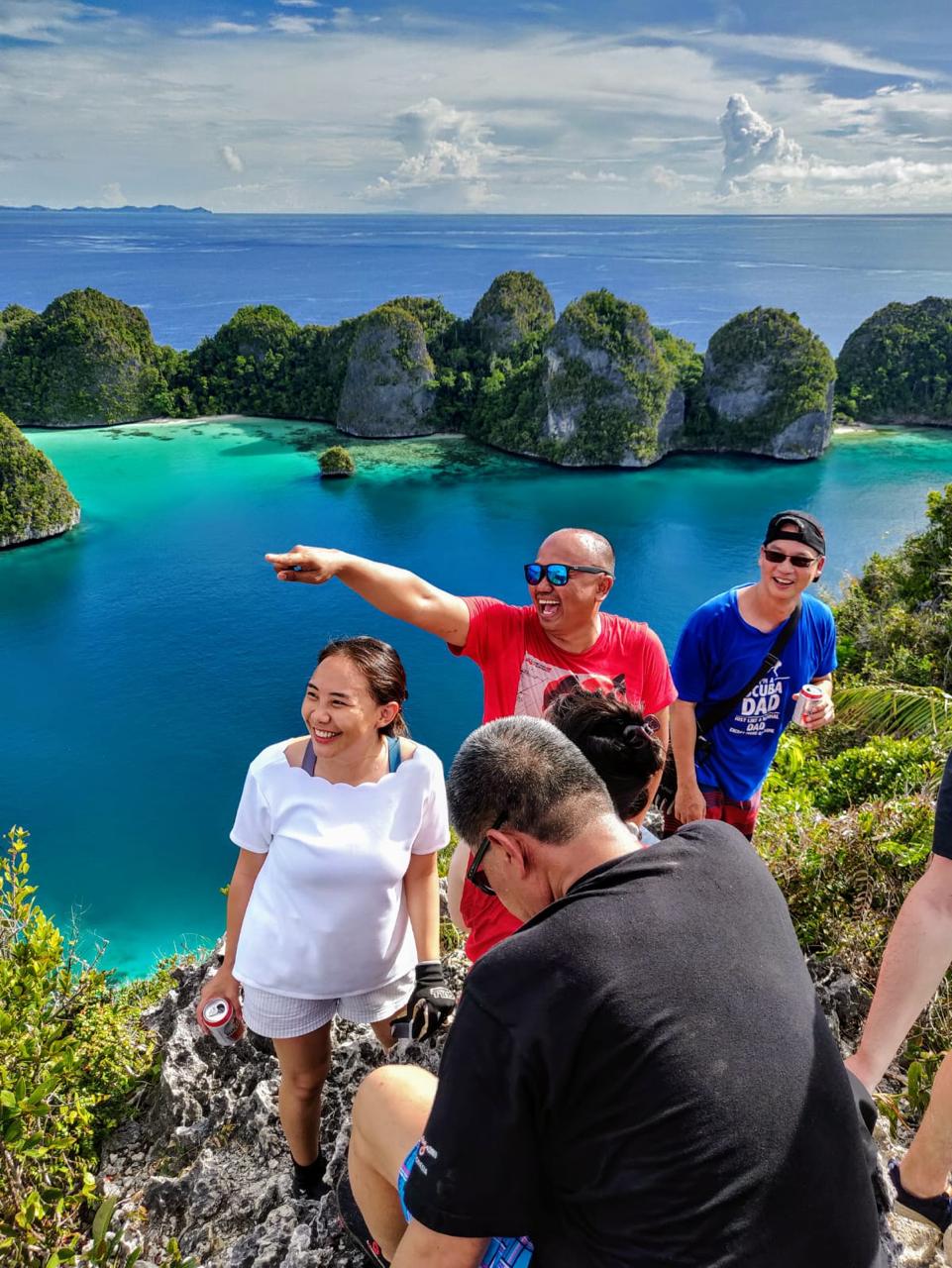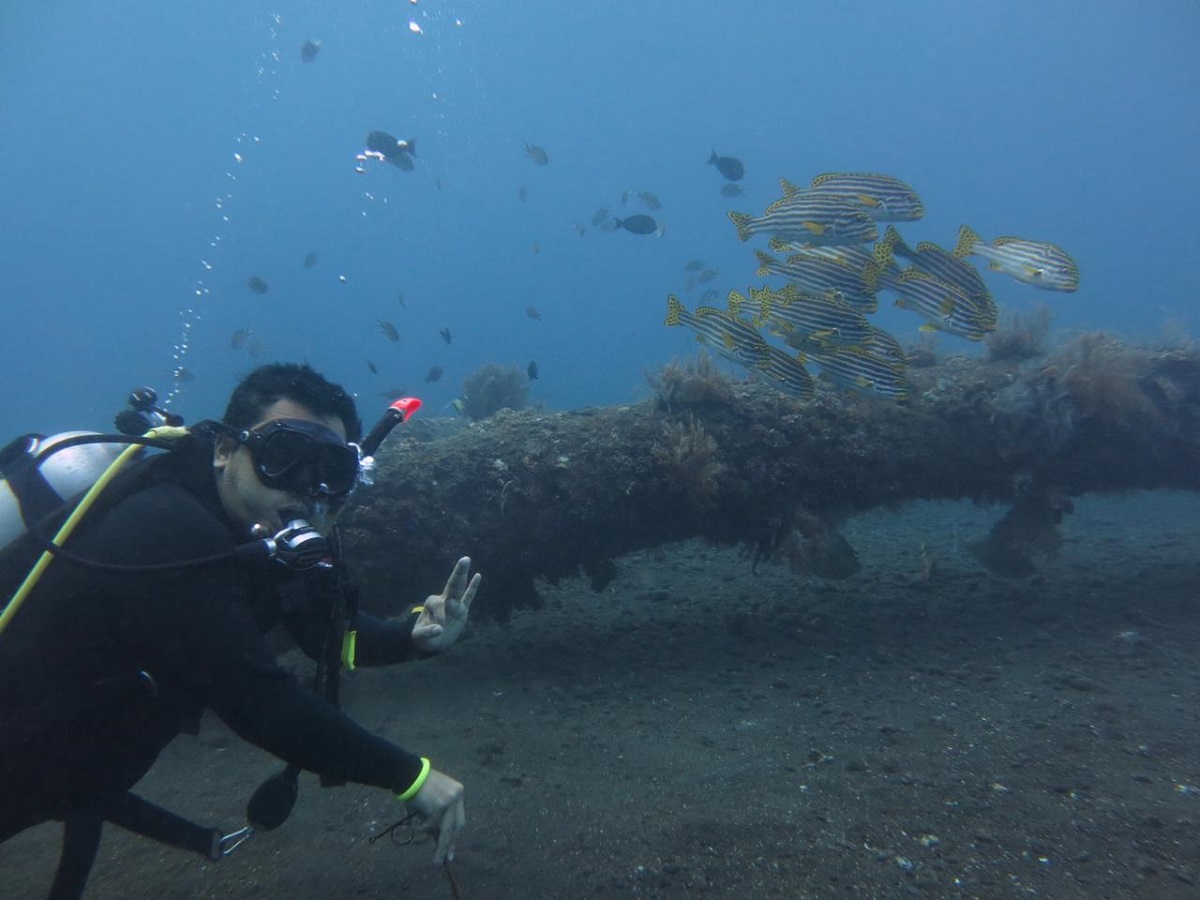Back pain is common among divers, but it can easily be prevented and resolved. Wherever you dive, our top tips will help you prevent back pain with the right gear choices, be prepared for when it strikes, and get back in the water faster after injury. Read on to find out more.
1. Reposition your dive weights to take pressure off your spine.
If you suffer from lower (lumbar) back pain, try positioning your weights differently to take the pressure off your lower back:
- Put some weight at the front of your weight belt rather than having it all at the back.
- Remove some weight from your belt and store it in your BCD pockets instead.
- Use a tank weight.
Not only do these changes reduce pressure on your spine, but they can also help with your body position and make it easier for you to move freely in the water.
2. Try a variety of BCDs to find one that suits your back.
With new and innovative dive gear constantly being produced, it is easier now more than ever to choose dive gear that fits perfectly and helps prevent back pain from ruining your dives.
There are many different BCDs on the market today, so take your time choosing one that suits your back and mobility levels.
The size and position of back supports in jacket BCDs vary, as do the number of pockets for weights. Dive backplates and wings are an increasingly popular option and help to minimize bulk and streamline you – which can also take pressure off your back when you dive.
Shop around with your back in mind. If you are not sure where to start, visit your local SSI Center to get some advice about different options.
3. Make sure you are warm enough during your dives.
There is nothing like a bout of shivering during a dive to make back pain worse or send your back muscles into spasm.
Help prevent back pain by choosing the right exposure protection:
- Wear a semi-dry suit or a dry suit for additional warmth if you dive in cooler waters or plan to do multiple dives each day.
- A 1mm neoprene rash vest with hood helps keep injury-prone backs toasty and out of spasm.
- Not sure what wetsuit thickness you need? Go for a 5mm full wetsuit with a 3mm shorty and layer up as needed depending on the water temperature.
- Choose a front-zip wetsuit if reaching for a zip behind your back is difficult for you.
EXTEND YOUR DIVE SEASON & STAY WARM ON EVERY DIVE. JOIN SSI’S DRY SUIT DIVING SPECIALTY.
4. Adjust your mask and fin set up.
If you struggle to bend over or turn your neck, make a few simple adjustments to your mask and fins to make life easier for yourself:
- Use open-heel fins with spring or bungee fin straps. They are much easier and quicker to remove than closed-heel fins when bending over is difficult.
- Minimize the need to twist and turn your neck by investing in a mask with a wide field of view.
5. Change how you gear up and enter the water.
Your water entry style and how you put your dive gear on are important choices to make if you have suffered from back pain. They will help prevent back pain from reoccurring, and so keep you fit to dive.
Take the stress out of your dives (and off your back) by adjusting how you start your dives:
- Back-roll entries can put stress on sore backs. Use a giant stride entry instead.
- Conduct shore dives where the entry is flat, sandy and easy, to minimize the chance of tripping up on a rocky surface.
- Ask you buddy or dive guide to help carry and lift your BCD and tank onto your back.
- Put your dive gear on whilst sitting down at the water’s edge, such as on a low rock, dive step or jetty.
- Put your gear on once in the water if that is a safe option.
6. Be a smart liveaboard diver.
Going liveaboard diving? Great, you are in for the adventure of a lifetime!
Liveaboard diving is amazing, though it does come with some extra challenges you need to be ready for.
Trying to move around on liveaboard dive decks with your gear on, and when the sea is choppy, will test any diver’s back muscles. Added to that you will be diving from dawn to dusk for many days.
With a little extra preparation, you can prevent back pain from ruining your trip:
- Choose a liveaboard with a large dive deck and a dive platform at water level so you can move more freely and enter the water with ease.
- Get in the water last. You will have more room on the deck and can forget about holding other divers up whilst concentrating on taking care of your back.
- Ask the crew to help you put your dive gear on at the water’s edge.
- Ask if you can remove your BCD and tank in the water and hand it up to the staff on deck.
Asking for help and making these adjustments might not be your first choice but do it anyway if you are prone to back pain.
They can make the difference between an awesome trip and missing out on those epic multi-dive days whilst you nurse a sore back.
READ MORE: TOP LIVEABOARDS FOR ADVANCED DIVERS – PART I.
7. Try different finning techniques.
Do you find that fin kicking from your hips makes your lower back sore? Try the frog kick instead to see if that helps correct your posture and reduce muscle strain.
8. Take a back-pain survival kit.
A simple kit to relieve back pain when it strikes is essential during remote diving trips when you do not have access to a local physiotherapist.
Make sure you include:
- Pain relief and anti-inflammatory medication.
- A tennis or massage ball to relieve tight muscles.
- A hot water bottle for easing muscle tension.
- A lumbar support brace if you have had back issues previously.
- A length of physiotherapist band for hamstring stretches.
9. Learn some yoga and Pilates exercises.
Take a quick look on the Internet and you will find numerous stretches, yoga workouts and Pilates exercises you can do to help prevent back pain.
Yoga and Pilates are also great for improving flexibility, core strength, and posture.
If you have a back injury or are prone to back pain, book a session with a physiotherapist or a yoga/Pilates instructor before you go on a diving trip to learn a customized exercise routine.
They will be able to watch your posture and make sure you do not injure yourself while you learn the correct techniques to prevent and relieve back pain throughout your dive life.
10. Drink plenty of water.
Back stiffness and pain can be due to poorly hydrated or injured spinal discs. Stay hydrated every day to keep your spinal discs plump so they can support your back for many years to come.



